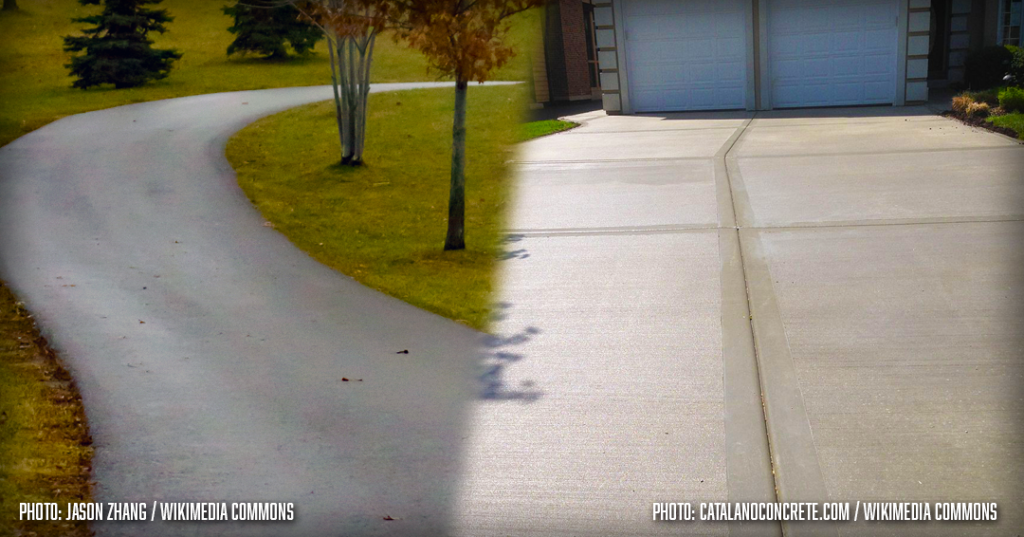Hauling Industry News
What’s the difference between Asphalt and Concrete?
 Information from homeadvisor.com
Information from homeadvisor.com
Concrete and asphalt are both mixtures of sand and crushed stone called aggregate. The difference is what binds the aggregate together. In concrete, cement binds the mixture and gives it a light gray appearance. Asphalt is bound with a black, viscous petroleum-based substance. Both come in assorted colors, stained or stamped for a decorative effect.
Asphalt, Blacktop or Pavement
Asphalt is a mixture of aggregate and binding agent. The binder is usually very hot when it’s combined with the aggregate. Pros pour the hot mixture over a level, gravel base before pressing and smoothing it with a steamroller. You can park or drive a car on it within 24 hours.
Most asphalt is poured as a single, continuous slab. Historically, roads were constructed with asphalt paving bricks. Today, manufacturers make this type of paver for residential use, but concrete pavers are much more popular.
“Asphalt” is interchangeable with the words “blacktop” or “pavement.” Colloquially, people refer to asphalt driveways as “blacktop” and call roads, airplane runways or parking lots “pavement.”
Asphalt Terminology
- Tarmac: A smooth, solid slab often used for driveways, parking lots and roads.
- Tar: A binder that’s derived from coal and was historically a binder. However, it is carcinogenic and hasn’t been used since the middle of the 20th century.
- Macadam or Tar & Chip: A different approach to driveways where loose stones, sometimes colored, are rolled on top of the hot mixture, creating a more textured surface than tarmac.
- Bitumen: A naturally occurring petroleum product used to bind aggregate materials in most asphalt-paving projects.
Concrete or Cement Driveways
Often used interchangeably, concrete is a composite material held together with cement. Concrete is a mixture of crushed stone, sand and cement. Cement is a mixture of water, powdered rock and clay. Pros pour the cold mixture onto a prepared gravel surface and level it. After several days of curing, the surface is ready to support the weight of vehicles.
It’s much easier to customize this material with colors and decorative embellishments. Stamping creates aesthetic appeal in a driveway, mimicking the look of flagstone pavers or real bricks, however, they can drive up the cost of a driveway installation.
Asphalt vs. Concrete Driveway
While both asphalt and concrete are good options for driveways, there are inherent differences in the two materials. Both require professional contractors because average homeowners don’t have the equipment or experience to tackle installation.
For our purposes, we’re comparing solid slab driveways as opposed to those made of pavers or a less common application.
| Factor | Asphalt | Concrete |
|---|---|---|
| Cost |
|
|
| Climate |
|
|
| Maintenance and Repairs |
|
|
| Longevity |
|
|
| Aesthetic Appeal |
|
|
| Drying Time |
|
|
| Wear and Tear |
|
|